White balanceis a crucial tool in photo editing that is often overlooked. It can influence the overall mood of an image and bring colors to life harmoniously. In this tutorial, I will show you how to effectively use white balance in Adobe CameraRawto give your photos the desired flair. Whether it's about creating a cool morning atmosphere or capturing the warm light of a sunset – the white balance is your key to it.
Key Insights
- The white balance affects the color temperature and tint of your images.
- You have various methods to adjust the white balance: manually, automatically, or by using the eyedropper.
- Small adjustments to the color temperature can have a significant impact on the mood of the image.
Step-by-step Guide to Applying White Balance
Let's start with how to adjust the white balance for your photos in Adobe Camera Raw.
Step 1: Selecting the Right White Balance
First, you need to locate the white balance. Open an image in Camera Raw. The white balance is hidden in the basic settings.
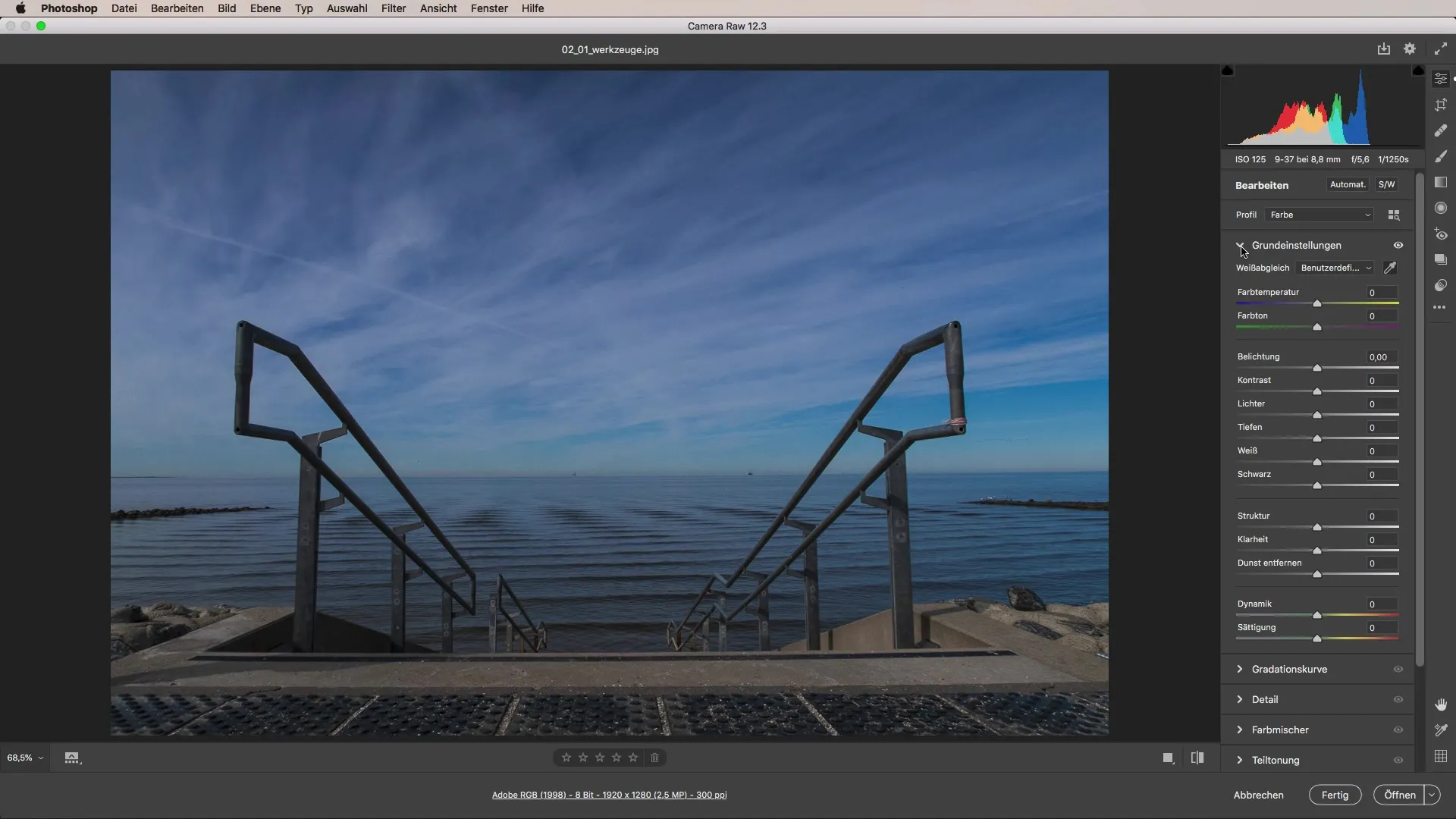
You have several options available:
- Automatic white balance: This setting allows Photoshop to correct the color temperature itself.
- As shot: This option keeps the original color settings as they were used during the shot.
- Custom white balance: Here you can make manual adjustments.
Step 2: Using the Automatic Setting
When you select the automatic setting, you'll see that Photoshop tries to optimize the color temperature. However, the result may sometimes not be perfect. You may find that the colors in the image are too warm or cool for your taste.
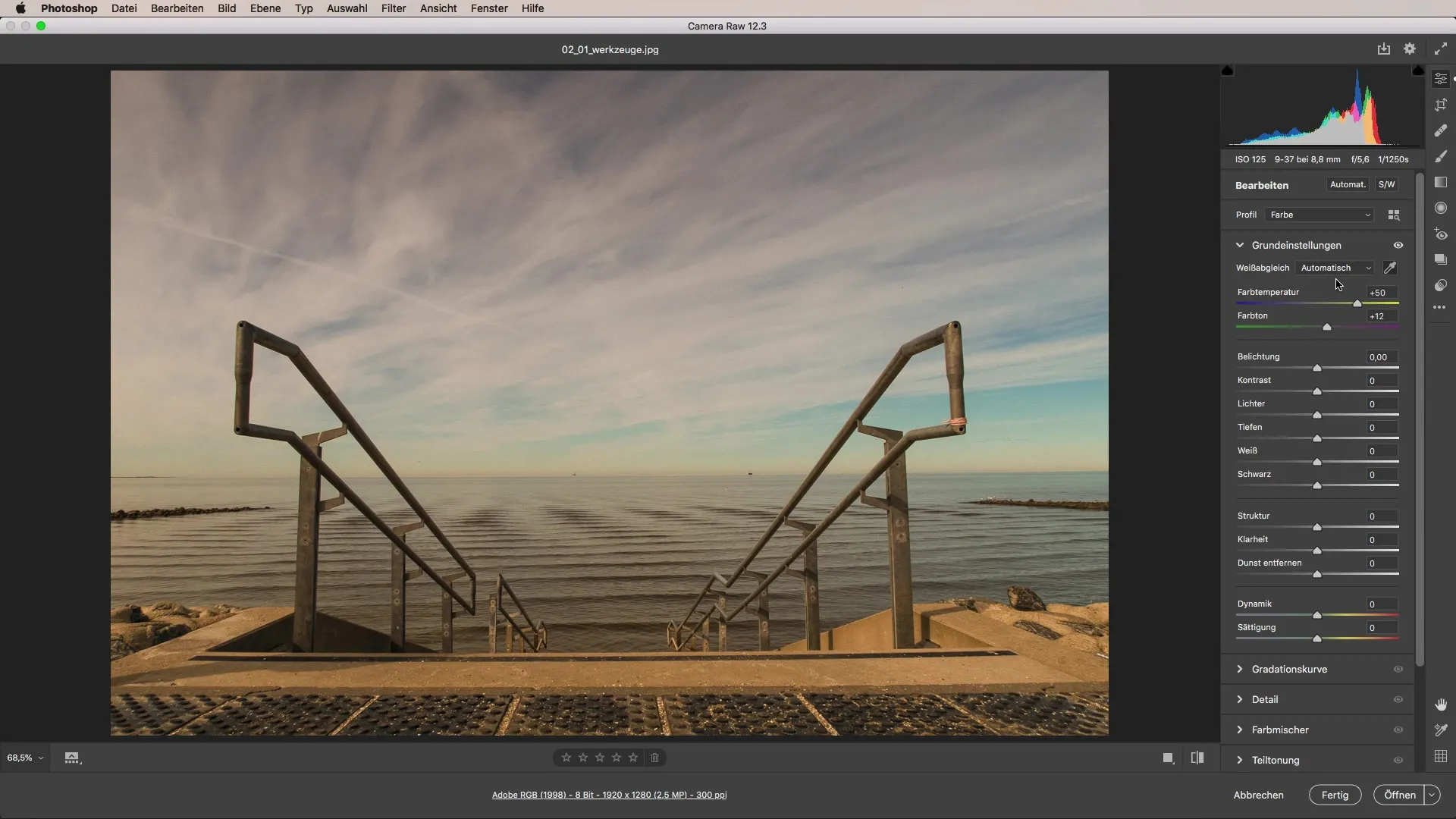
In the current example, the automatic white balance is too warm. Effects such as a too "sunny" mood may not convey the desired impression of a cooler location like the North Sea.
Step 3: Correcting with the Eyedropper
To make a more accurate adjustment, you can use the eyedropper, which is known as the white balance tool. Select the eyedropper and click on an area in the image that can be considered a neutral gray value. Both the cloudy sky and the gray concrete are excellent for this purpose.
By this selection, Camera Raw will adjust the color temperature and tint, achieving a result that is closer to your desired impression.
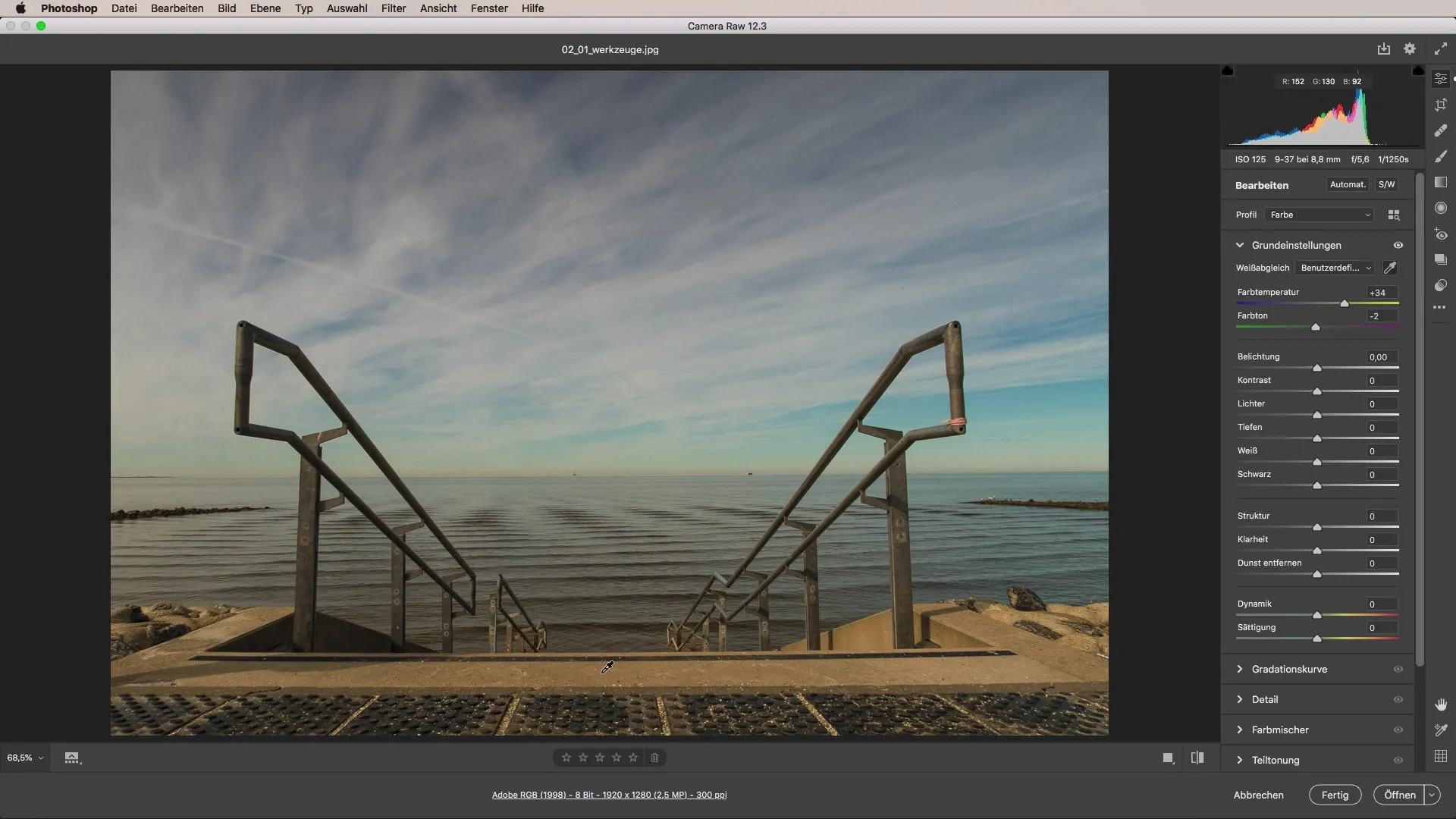
Step 4: Making Manual Adjustments
Now that the image has a better base value, we can further adjust the color temperature. Move the color temperature slider left or right to make the scene cooler or warmer. A cooler value gives the photo the impression that it is early morning and the atmosphere is fresh and clear.
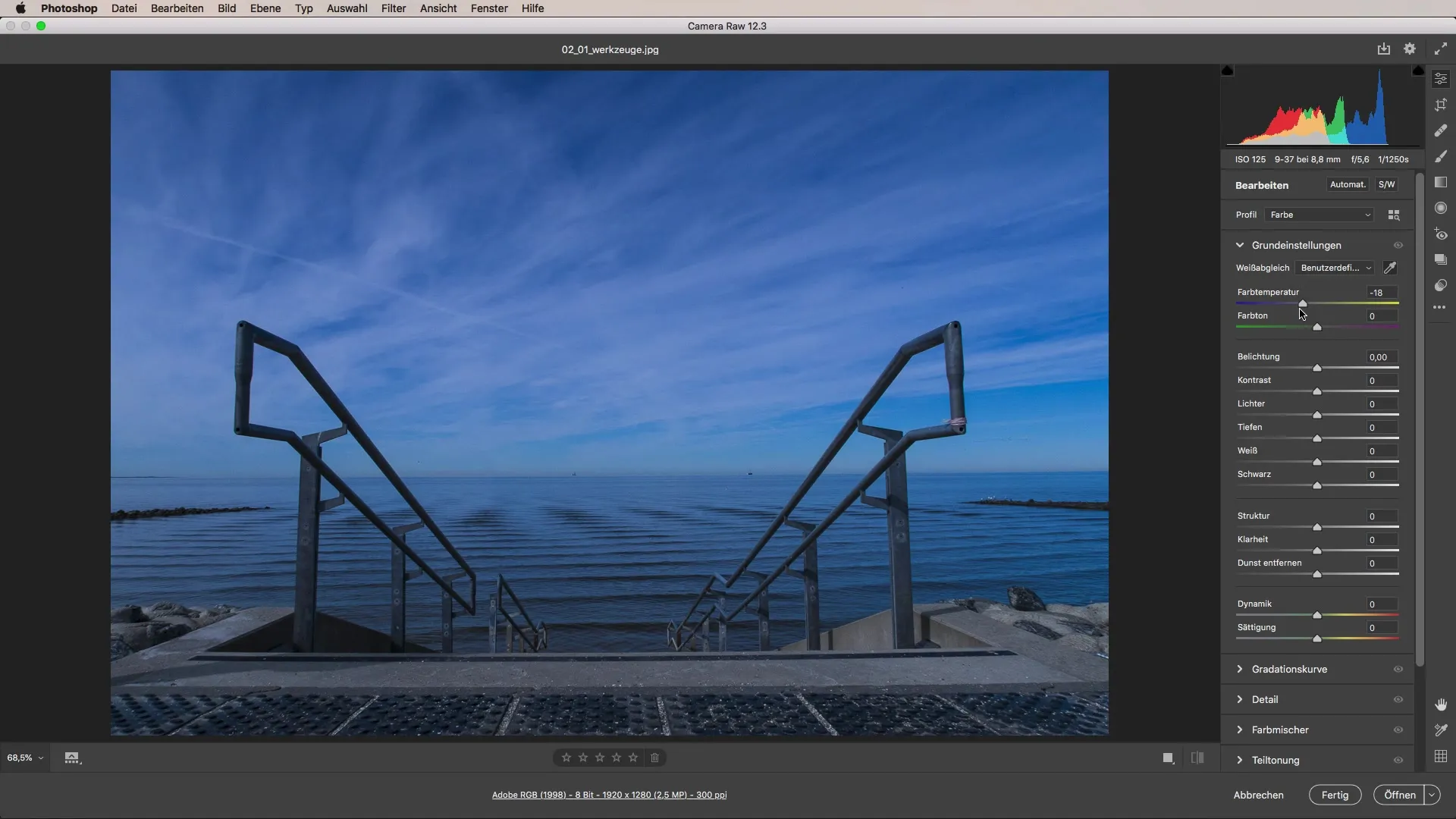
Add a warmer tint to create an inviting afternoon mood, as if the sun is shining from the side.
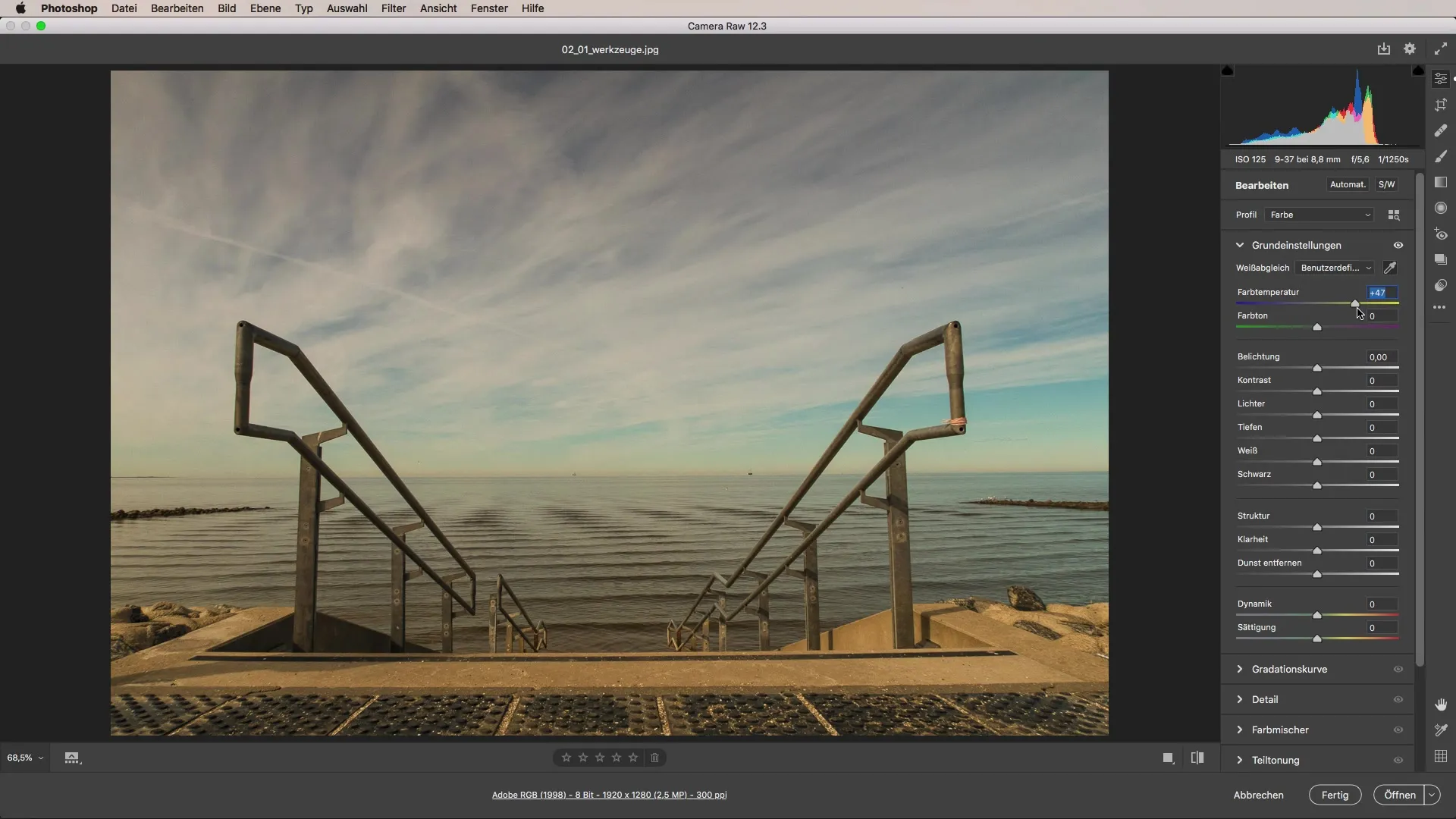
Step 5: Fine-tuning the Tint
In addition to the color temperature, you can also adjust the tint. If you want to add a slight greenish cast, pull the slider slightly to the left. This can give the image a touch of murkiness or create a sense of humidity. Alternatively, you can move the sliders to the right to add magenta tones that can help create the impression of a warm sunset.
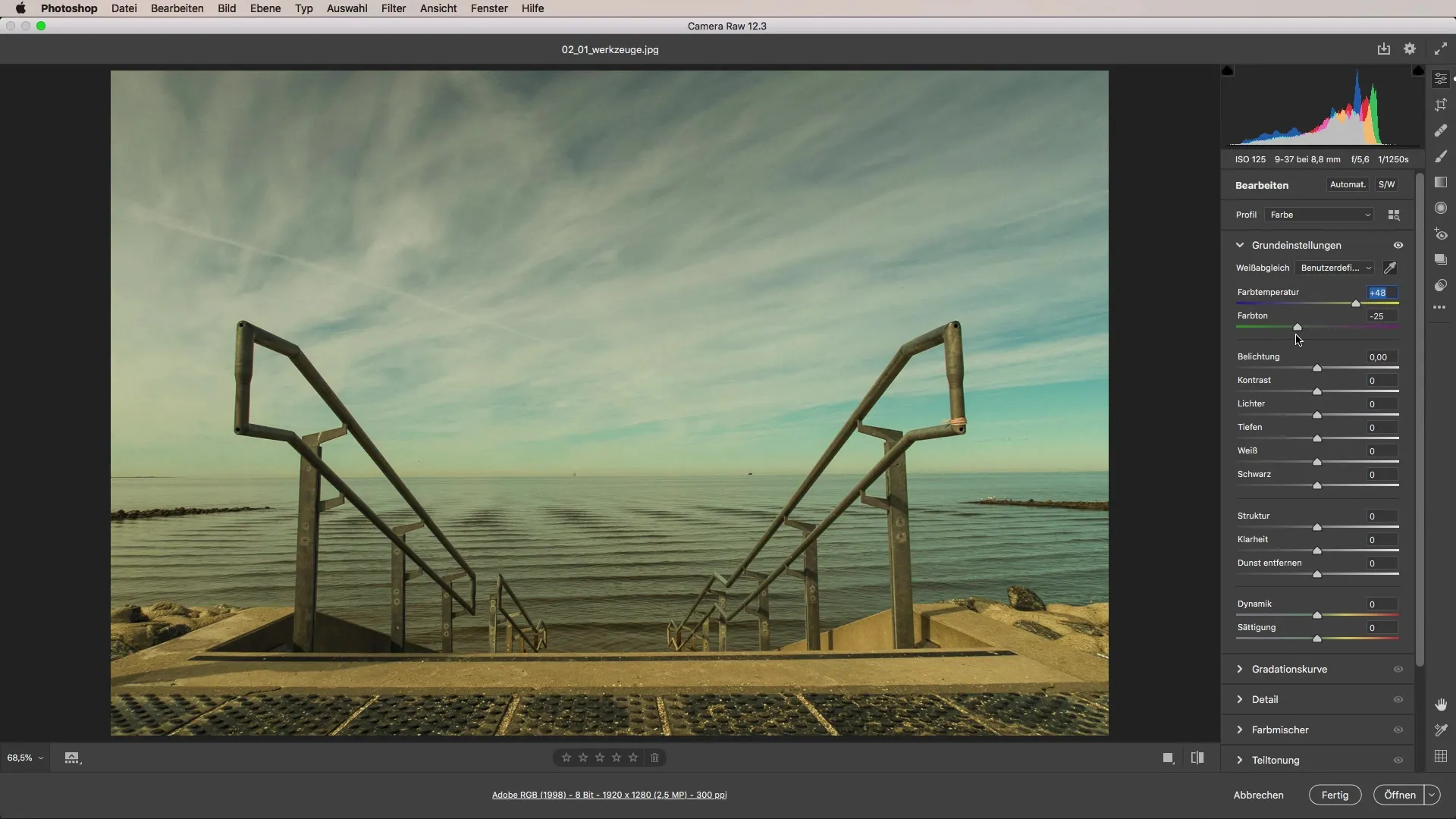
Step 6: Enjoying the Creative Possibilities
With these two rules - color temperature and tint - you can drastically change the mood of the image. It is amazing how small adjustments can contribute to changing the perception of an image.
You can intentionally create an icy mood or generate a warm and inviting atmosphere. Thus, white balance is a simple yet incredibly powerful tool that can allow you to achieve great effects.
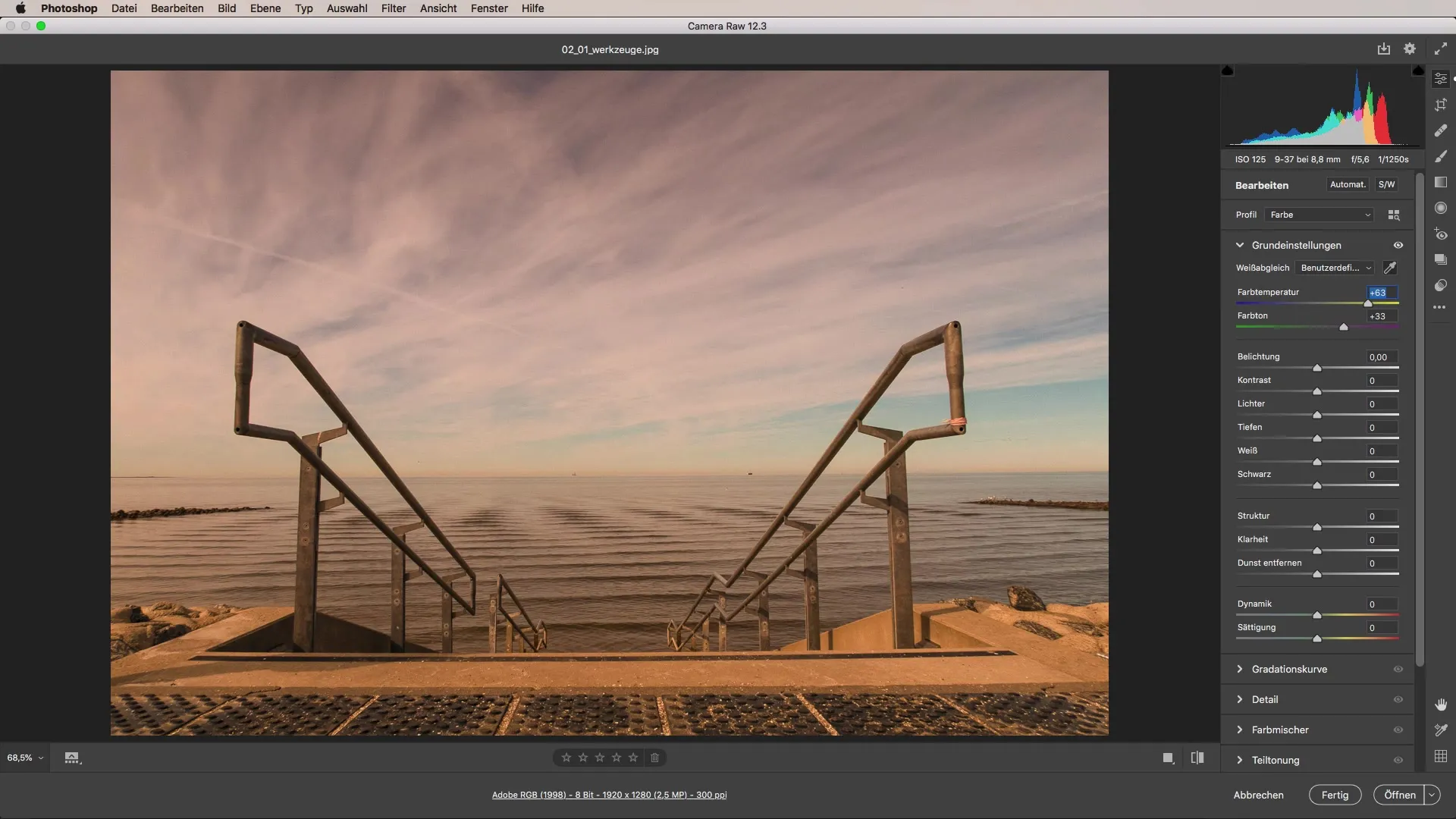
Summary – Optimally Utilizing White Balance in Camera Raw
Adjusting the white balance in Camera Raw is crucial for controlling the color temperature and tint of your images. Through manual adjustments as well as using automatic settings and the eyedropper, you can significantly influence the mood of your photos. With these tools, countless creative possibilities are at your disposal.
FAQ
What is white balance?The white balance regulates the color temperature and tint of a photo to ensure realistic color reproduction.
How can I change the white balance in Camera Raw?In the basic settings of Camera Raw, you can switch between automatic, as shot, and custom settings.
What role does the eyedropper play in white balance?The eyedropper helps you select a neutral color value in the image to achieve a more accurate color temperature correction.
How does color temperature affect the mood of the image?A cooler color temperature value creates a fresher, more distant atmosphere, while a warmer value conveys an inviting and cozy mood.
Can I adjust the white balance retroactively?Yes, the white balance can easily be adjusted in post-processing with programs like Adobe Camera Raw.


